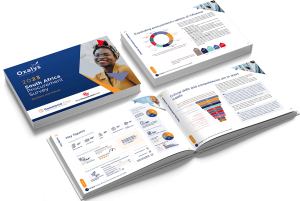 By Matthias Gutzmann, Founder, Digital Procurement World
By Matthias Gutzmann, Founder, Digital Procurement World
Digital procurement transformation is no longer an option, it is a must. Ignoring it today will ultimately lead to a loss of procurement’s influence in the organization. On a more positive note, early adopters in digital procurement are already benefiting from incremental cost savings, increased productivity, and substantial improvements in innovation, quality, speed, and risk management.
As a CPO, it is absolutely necessary to understand how digitally mature your procurement organization really is, how you compare to others, and the key steps to digital maturity.
Given the relevance and urgency of this topic, I wanted to explore further. So, I reached out to some of the top thinkers and change-makers in procurement to understand how they are transforming their procurement organizations in the context of digital – here is what they have to say.
#1: Dirk Karl, Group Executive & CPO, MTN Group

What are your current activities in procurement related to digitalization?
We have a widespread number of digitization initiatives at MTN Global Sourcing and Supply Chain (GSSC) within our own domain as well as significantly contributing to the overarching MTN Group digitization strategy.
Within GSSC, we are focused on creating a data-driven mentality and making fact-based decisions. The tools that our data scientists build in house play an important role in achieving operational efficiency through digital transformation. The basis of our digitization approach is concentrated on three key aspects – data management, process automation, and advanced analytics.
Our digital journey started with driving a single source of truth and ensuring that all stakeholders trust the data. Identifying and transforming (internal and external) data into SMART data and bringing data sources together is a critical part of our data management process. The value of insights is as good as the data used – garbage in is garbage out. We translate SMART data into insights that focus on delivering the right product, through the right channel, at the right time, at the right price.
To allow GSSC to focus on strategic elements of the business and improve operational efficiency, we have implemented RPA. Our key users allow us to program bots in house, reducing the dependency on third parties and increasing our speed of execution. Our first “AI assistant” is called GeSSiCa, and she is always ready and willing to take on the challenges of mass amounts of data processing!
GSSC are also front runners in providing valuable fact-based insights to the wider MTN organization through digital initiatives. Our BI platform provides our end users with dashboards which allow them to drill down from a bird’s eye view of their procurement requests to a detailed view of a specific sourcing activity, and where it currently is within the procurement process. This type of data is further enhanced through integration with vendor platforms to provide advanced insights into manufacturing and shipping lead times.
As a digital provider across continents, MTN is focused on building platforms to manage the integration of suppliers as an enabler in the development of digital solutions. Open API platforms have been built to allow our digital partners to integrate with the MTN environment.
Your most amazing accomplishment in digital
As part of a multibillion-dollar sourcing transaction, GSSC found themselves with millions of different outcomes/scenarios. Previously, the only way to manage such a large number of variables was through excel-based formulas. Our lead data scientist picked up on this and started to create a fact-based, decision support application (DSA). Built fully in house using open source technology, our DSA platform is primarily used to run scenario analytics. The application manages x-functional decision-making and combinatorial negotiations in complex multi-unit tenders. It enables the user to instantaneously calculate the optimum solution, while fulfilling all side conditions.
What would previously take hours, with varying degrees of accuracy, is now done in milliseconds, is 100% accurate, traceable and most importantly, auditable. When looking at awarding multiple vendors, across multiple geographies, we can identify bundling opportunities, apply filters, and set thresholds, all within a matter of seconds. We can now move from several million scenarios into single digits with a complete paper trail in an instant. Now that is procurement innovation!
#2: Isabel Hochgesand, CPO, Beiersdorf
 What are your current activities in procurement related to digitalization?
What are your current activities in procurement related to digitalization?
At Beiersdorf, we started our digital transformation journey within the procurement organization about 7 years ago. We set out to adapt to the consumers’ increasingly fast-moving shopping behavior and constant change of product preferences, and to deliver competitive advantage and added value for the company’s success. To that end, digital transformation of the business as well as in procurement is key. On one hand, it is crucial to create straightforward user experiences. On the other hand, digitalization drives automation and that drives efficiency.
From demand to purchase order to paid invoice, we have one standardized IT-platform. It functions globally with harmonized processes and full transparency in procurement on global spend. The idea was to use the implementation of one globally harmonized ERP backend as an initial impulse for process standardization and smart order channels to generate first efficiencies. We moved very quickly from lighthouse projects in corporate procurement to a global application. It is rewarding to see how our digitalization efforts have been adopted so quickly around the globe. The availability of real-time data enables us to support and consult the business, anticipate trends, and derive strategies.
Digitalization is also a critical efficiency driver. By automating the inquiry process, for example, Beiersdorf has been able to free up resources. This enables us to put more focus on value adding activities, such as exploring new markets, or working closely together with business partners on strategic topics. We can invest in new and emerging categories like digital media, marketing, and start-up collaborations. Our digitalization efforts are significantly improving the effectiveness and the impact of our procurement teams. We see a step change in value creation.
Aside from having implemented Robotic Process Automation (RPA) within our indirect purchase to pay (P2P) process, we use our digital mindset to continuously re-engineer current manual processes by focusing on AI solutions such as chatbots and automatic data classification.
Last but not least, digitalization is present in all fields of our work, also in training. While I personally believe in the value of face-to-face training, and do not want to dismiss that, we have created a state of the art e-learning training portfolio to complement the classroom curriculum. With this, we reach our people around the globe – wherever they work, whatever they are interested in, or if they’re in need of a particular skill or tool. Interestingly, one out of four ‘students’ of our procurement academy are non-procurement people.
Your most amazing accomplishment in digital
Improving user experience has been one of our main objectives and a major accomplishment for Beiersdorf. To simplify indirect purchases for all Beiersdorf employees, we developed an award-winning guided buying solution. It features easy-to-use order channels that focus on integration, with one consistent look and feel, and automatic guidance of the user. Using this tool not only streamlines the inquiry process, it also supports the onboarding of new people, and the auditing process, as it provides a central repository of data. You can call it a 360 degree gain.
#3: Bob Murphy, CPO, IBM
 What are your current activities in procurement related to digitalization?
What are your current activities in procurement related to digitalization?
In becoming a cognitive enterprise, we have been addressing the challenges of digital reinvention that require organizational agility and new skills, as well as access to data, platforms, and exponential technologies that optimize innovation. We have already reorganized our teams following an agile operating model to be more responsive to clients and to execute faster. And, we are investing in training for new skills we know we will need. We are also focusing on Master Data Management and improving enterprise-wide data and common platforms to provide a single source of truth. And, we are taking advantage of our IBM AI technologies to solve business problems and automate processes. We are seeing first-hand how AI enables machines and humans to work together. AI enhances, scales and accelerates human expertise throughout source to pay. More recently, we have started re-imagining processes by designing around personas (what are the expected experiences and desired outcomes from each persona) and executing through an intelligent workflow that covers source to pay. This is a new way of looking at our processes and technologies holistically to optimize our source-to-pay workflow.
Following are some examples where we are using AI in Procurement.
We use Watson Contract Advisor/Watson Compare & Comply to provide us with instant contract analysis, comparing supplier agreements to model agreements in order to maximize terms and conditions. It scans documents, even unstructured data. And, in a matter of minutes, it identifies clause similarities and deviations, identifying potential risks and uncovering opportunities for negotiation. With this tool, our procurement professionals can analyze contracts in less than a third of the time it had taken.
We recently started using the Trust Your Supplier (TYS) blockchain network. TYS is a trusted, decentralized network for managing digital identity. It uses Watson to ensure that the supplier’s identity on the blockchain is current, real-time, and uses Watson to track and maintain changes to supplier identity information.
Another AI tool we developed, called “Pricing IQ,” evaluates internal pricing data and trends, market intelligence, and market sentiment. Pricing IQ gives us insights into optimal pricing that we use real-time in supplier negotiations. It provides price comparisons, discount predictions, alternative product recommendations and “what if” scenario analysis. As a result, we’re spending about 80% less time analyzing price rates. And we’re driving 10-15% incremental savings year to year.
Your most amazing accomplishment in digital
I’d say our most amazing accomplishment in digital has been gaining access to data, enhancing it with AI, and using those insights in our decision-making. This was made possible by our conscious decision to establish a procurement data strategy and to execute against it. We have done all the hard work that makes our data usable, resulting in advanced data analytics capabilities and the ability to apply Watson/AI in ways that elevate the value that procurement professionals deliver. We are using advanced analytics and cognitive contracting to achieve things at a rate of speed and degree of automation that weren’t possible just a few years ago, such as to predict pricing, to provide risk insights, to confirm compliance and to expedite contract authoring. But what’s even more amazing is that these evolving activities will be viewed as “routine” within just a few years.
#4: Klaus Staubitzer, CPO & Head of Supply Chain, Siemens
 What are your current activities in procurement related to digitalization?
What are your current activities in procurement related to digitalization?
We started our digitization journey about 3 years ago. At that time, we were of the opinion that we needed a holistic digital master plan, which we then could roll out top down through the organization. However, it quickly became very clear to us that the decisive success factor is not a fully thought-out top-down concept, but the active participation of employees in this transformation process: To achieve better acceptance, focus more on user-centric solutions, and to constantly get new ideas from bottom-up.
Thus, our digital transformation journey is built on an aligned digital transformation framework. This ensures applicability to our different business needs and establishes clear guidance towards building blocks, dependencies, and development paths. At the same time, we actively involve our employees via digital communities and a self-organized digital network of passionate experts. Our employees, including management, must understand digitalization intrinsically as the new normal. Therefore we also put much attention toward changing management, self-expanding knowledge bases (internal Wiki), and various training, including digital mindset training.
The framework itself consists of 5 building blocks:
1. Procurement platforms: before you can think about data, analytics, and AI you obviously have to assure that our employees are supported in the day to day processes and workflow by platforms that help to get their jobs done whilst producing data. We follow our principle: as many platforms as needed, a few as possible.
2. Ecosystem integration: As procurement by nature is a cross functional endeavor, we need to integrate with our partners’ architectures, e.g. ERP backends and PLM applications.
3. One global data mart: With the first 2 building blocks now generating data we are replicating the relevant data in our central data mart, managing the data, adding external data sources as needed, for one integration layer for all connecting analytical and AI driven apps.
4. Analytics and knowledge management: Before advancing to the last building block, we laid a solid foundation of descriptive analytics apps as well as digitized our procurement know-how, like Wikipedia.
5. AI driven decision guidance, simulation and autonomous sourcing. Here we are using AI engines for more effective decision making (SCM Companions) and efficient integration with our platforms. Especially in the field of cost and value engineering, we establish digital twins of cost. Our latest development is an autonomous sourcing bot that will write a whole new chapter in procurement.
Your most amazing accomplishment in digital
Digitalization is all about value generation. We put a great deal of emphasis on consequent utilization of our digital architecture amongst our employees worldwide. You can buy the greatest digital tools, but if your staff is not using them, value generation will be not just zero but negative. So, scaling up our digital ecosystem is something I am proud of.
We are happy to see how our businesses have managed to really drive the implementation of our framework. For 12 months now, we have seen that even new opportunities like our companions, digital twins-of-cost, or autonomous sourcing are eagerly piloted and pulled from our business units.
At the end it is all about people. The broad involvement of our employees, the strong collaboration with our cross-functional partners – the different Siemens businesses as well as our regions – is probably our greatest accomplishment, and at the same time our greatest recipe for future success.


























